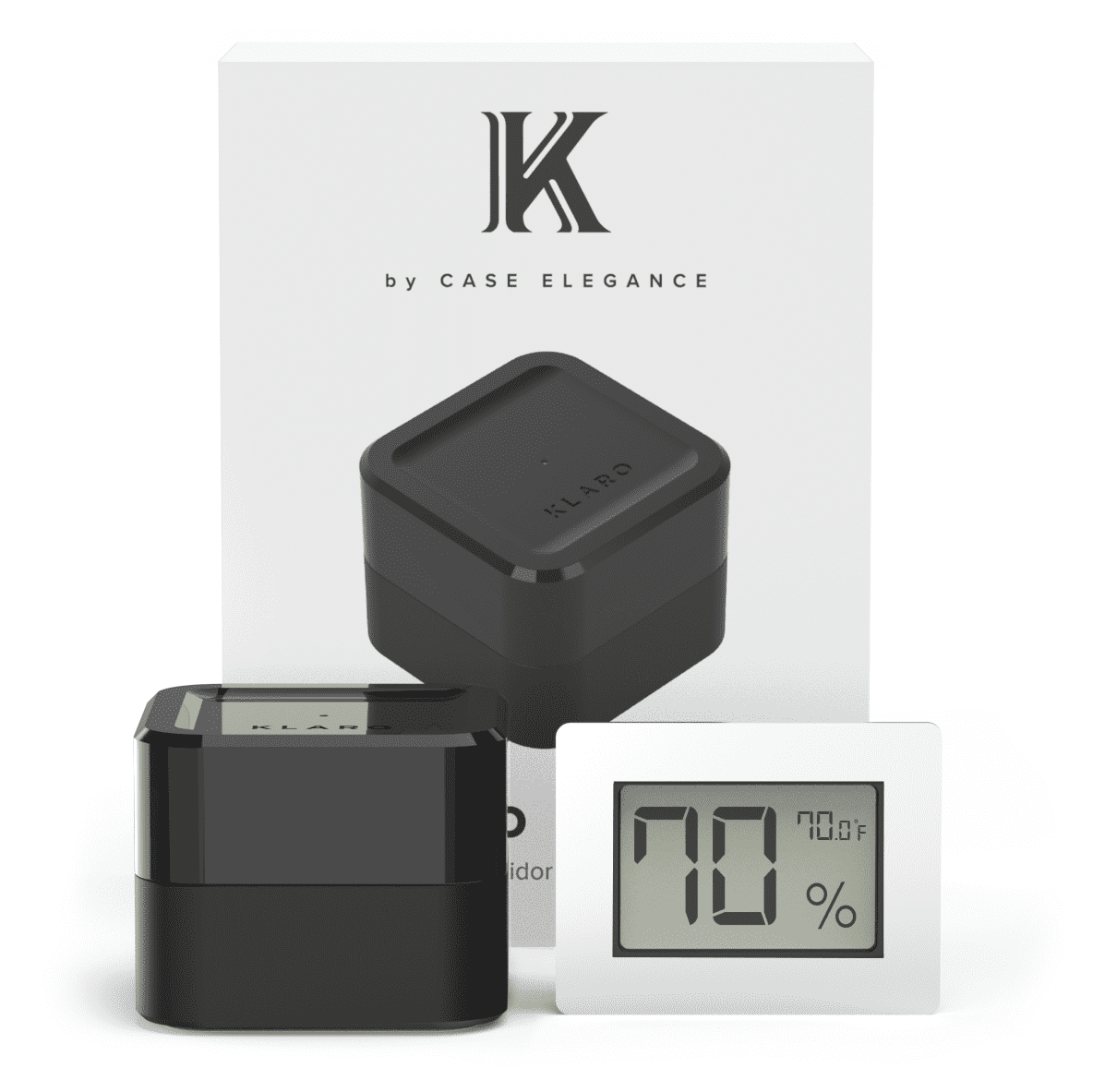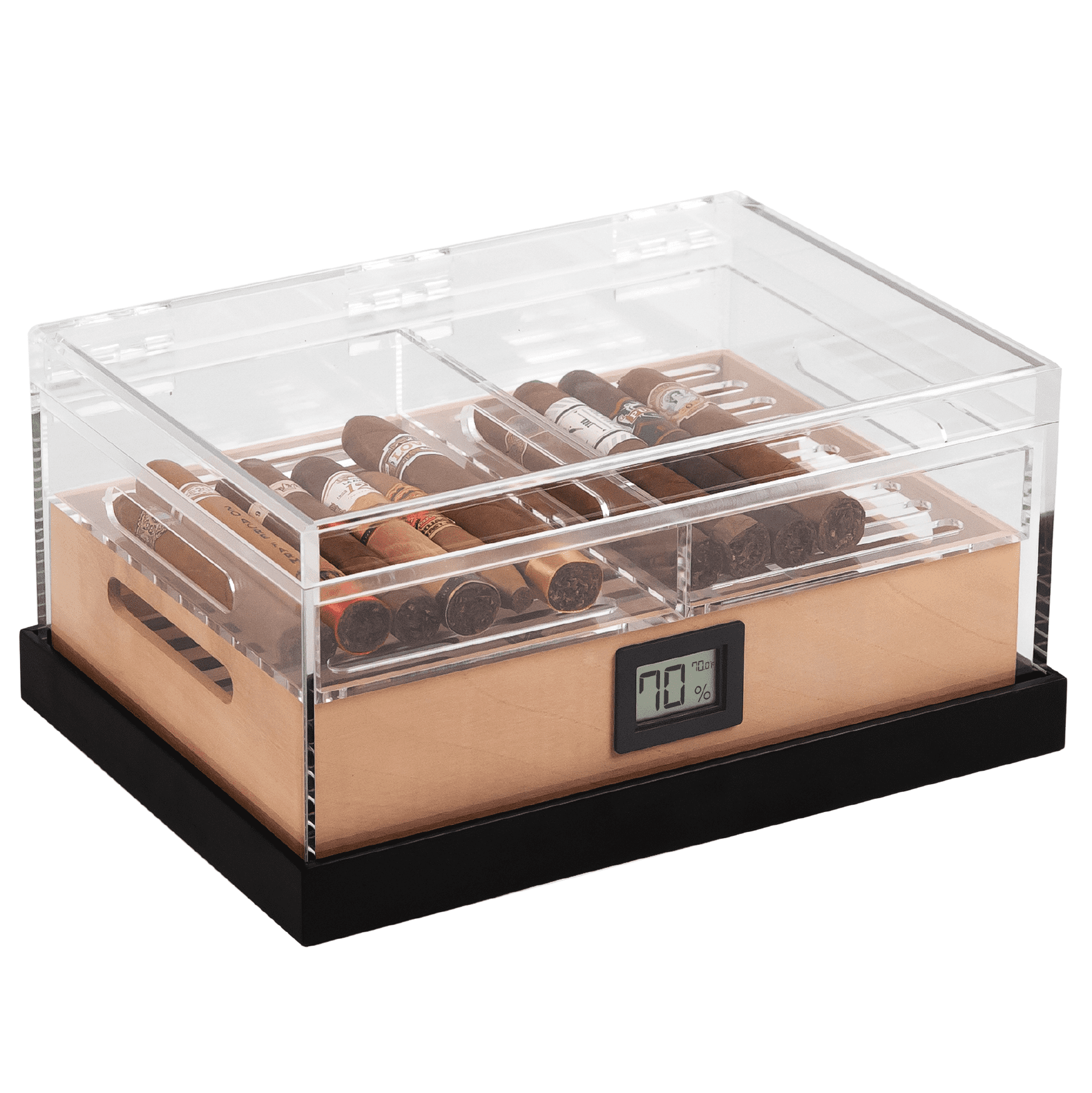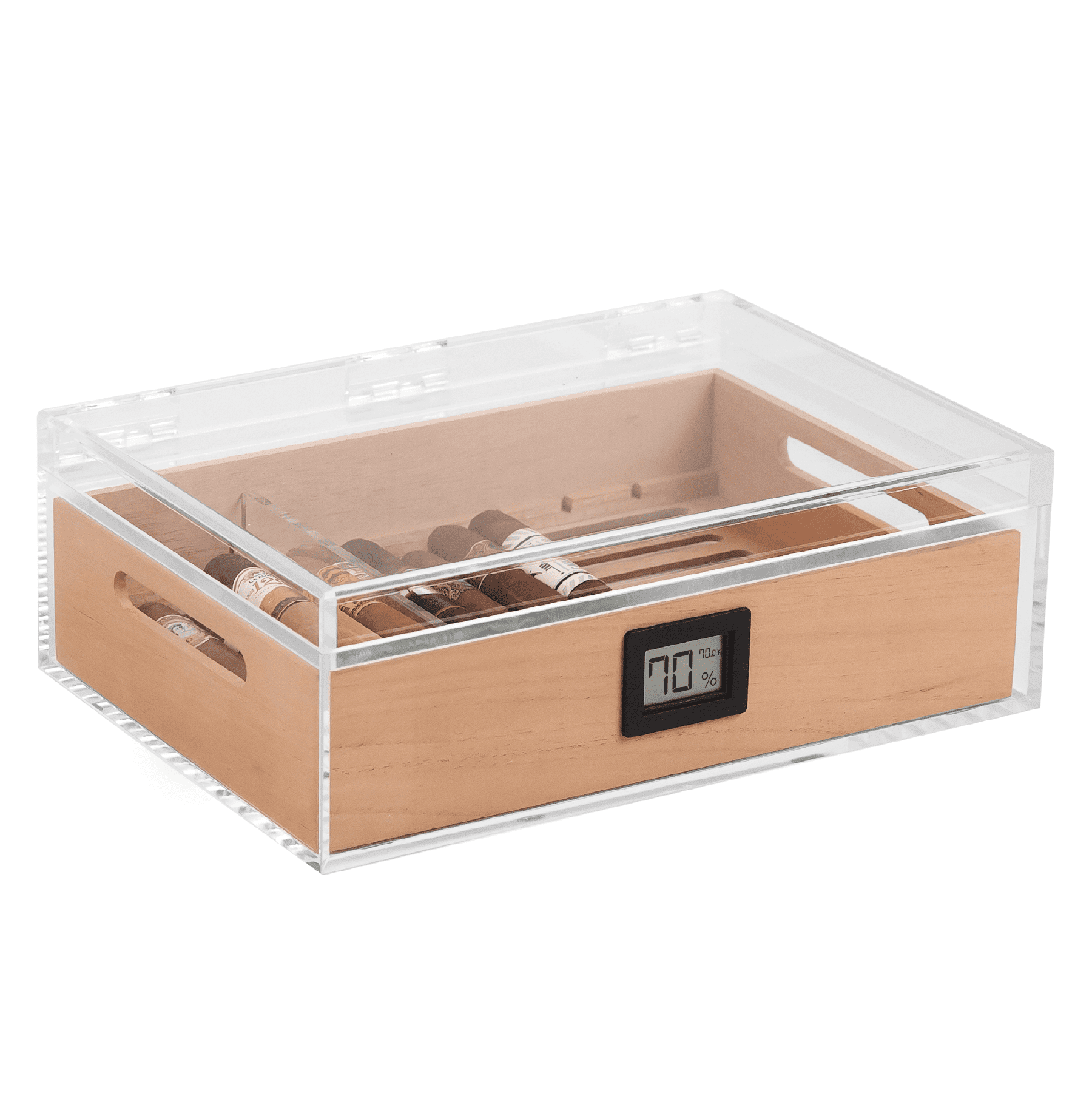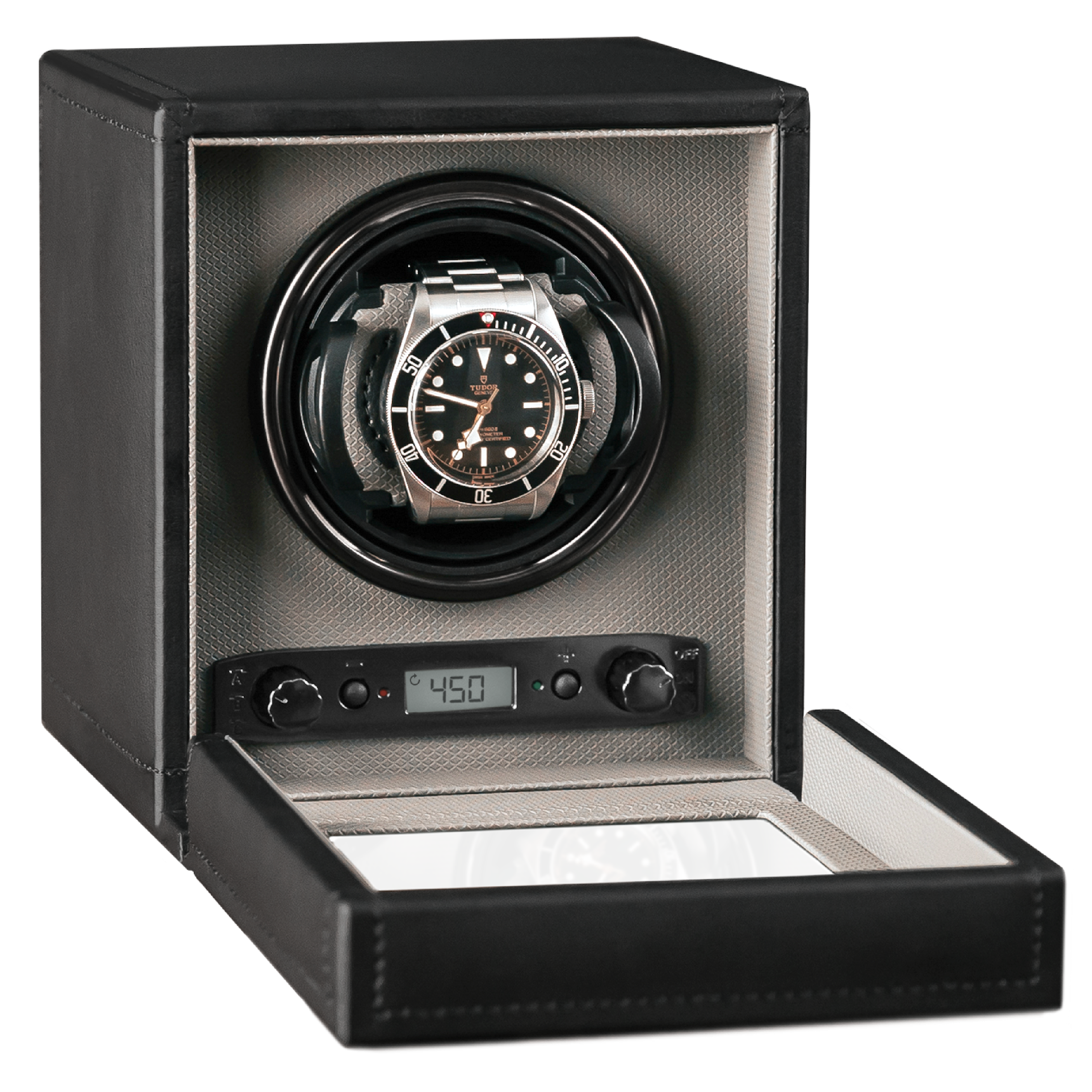
We’ve seen the inside of some of your humidors. Disheveled messes, many of them. So it’s no surprise you forget about some of the cigars in your collection or can’t track down an exciting new selection you bought weeks ago. Some cigars never get smoked, even, because you can’t remember what they are, where you bought them, or how long they’ve been hanging around in your humidor.
In this one, we’re going to discuss humidor organization; there’s more to healthy cigar storage than just casting them into the Spanish cedar humidor box and calling it a day. Let’s explore.
Consequences of A Disorganized Humidor
A cluttered humidor means you don’t have a good system of organizing your cigars, and it shows. Now, a good quality humidor will keep your cigars safe for years, and many smokers take advantage of this grace period by shoving any and all cigars into the box. But there are some realistic consequences to a disorganized humidor:
- Unwanted mixed oils and flavors
- Loss of cigar identification info
- Lack of aging information or tracking
- Damaged cigars
- Poor humidity distribution.
If you’re part of Team Slapdash when it comes to organizing your cigars, we’ve got some tips that will prevent your humidor from turning into the randomized glove box of a mad man. Follow whichever of these strategies that works best for you, but implement some form of organization to get the most out of your tobacco investment.
FIFO: First In, First Out
Perhaps the simplest strategy to ensure you don’t lose out on a good cigar due to negligence is following the most standard inventory practice of FIFO–“first in, first out.” The concept is simple: organize your cigars from newest to oldest so that you smoke your oldest cigars first before moving on to anything recently purchased. This way you move out the older inventory and don’t worry as much about tracking how long a cigar has been in your collection.
Keep in mind, FIFO has almost nothing to do with your cigars going bad. A good humidor will keep your cigars preserved for years if stored correctly. Instead, this level of organization allows for the circulation of new product, so you aren’t sitting on something you’ve forgotten about and lose out on space for new cigar releases you might learn about.
We’ve heard of many collectors who complete a FIFO method by storing their newest cigars on the lowest area of the humidor and then shift cigars towards the top, so the top tray is reserved for those cigars ready to smoke.
Tobacco Nerd Note: Keeping a log of what you’ve smoked is a helpful way to keep track of what you like, what to revisit, and what to avoid in the future. Keep a cigar journal or track everything with a spreadsheet, including tasting notes. There are also multiple cigar apps that will help you track what you’ve smoked.
Top Tray Selection Method
Organize the lower levels of your humidor with the FIFO technique, keeping track of newest to oldest cigars. As mentioned, this will help prevent aging cigars you don’t want to age. But keep the top tray of your humidor separate from that system. Use this location as an assortment tray where you conveniently store a variety from the stock below.
These options on your top tray could include:
- A couple go-to standards
- One mild cigar
- A full-bodied cigar
- An aged cigar (ready to smoke)
- Something new and different
This way, when it’s time to pick something out for the evening or occasion, you have a representative selection of your stock without having to dig through everything you own. Yes, cigars are durable and when rolled well can handle a fair amount of jostling. But the less frequently they are handled, the better they will hold up over time.
Should I Stack Cigars?
For flavor and structural purposes, there is nothing wrong with stacking cigars in your humidor. It’s common, and it makes sense. Is stacking good for organization? Not really. You’ll be handling cigars more as you dig into the stack to find your choice, which doesn’t help anything. And this will lead to cigar shifting around, making it more difficult to find what you want that next time.
The thing is, you can purchase a high-quality Klaro humidor without breaking the bank. So if you find yourself stacking cigars, this might be the right time to consider a second humidor. Not only does this open up more real estate, but you can begin to explore aging techniques, experimenting with different humidity levels, and more.
But if you are going to stack your cigars, here are a couple mainstay rules and protocols:
- Stack celos and nudes separately.
- Stack by brand or strength when possible.
- Avoid anything more than four deep.
- Never stack flavored cigars.
The Risk of Overfilling

Another risk of the haphazard, unorganized humidor is overfilling. Without keeping a count of how many cigars you have, what sizes and types, you run the risk of overfilling your humidor. The more bulk tobacco you store in your humidor, the more difficulty the humidor will experience regulating a consistent humidification. And this can work in both ways: too much or too little humidity. Keep a close eye on your humidor digital hygrometer to watch for strangeness.
Organizing your humidor will help you determine when it’s necessary to purchase a second or larger humidor. The size of your humidor determines how many cigars you can safely store. If you overcrowd small humidors, you lose the ability to monitor and control humidor humidification levels accurately.
Tobacco Nerd Note: At some point, you will lose the band on a cigar or its information, and you will be left to guess at the identity of an unknown soldier. A good habit is to purchase blank cigar bands to keep on hand. If you see that a band is falling off, grab the cigar's info, record it on a blank band, and remedy the problem before it becomes an issue later down the road and you end up smoking something with no reference.
Aging Cigars Among Daily Smokers
As you talk to cigar enthusiasts about humidor organization, they are likely to mention two categories: daily smokers and aging cigars. Most collectors have both, and separating them is important.
Daily smokers include your go-tos, the cigars you know and trust and will always keep on hand. Your aged cigars are those you are willing to put some time and investment towards–months and years–in the hopes that the aging process will create a one-of-a-kind smoking experience.
Sure, you can store these two types in the same humidor. But keep them separated, at minimum.
Aging your cigars can help refine their flavor profiles. Though cigar tobacco is already cured, further time in the humidor can allow more organic compounds to break down, which can potentially develop some flavor notes, allow the tobaccos to blend better, and create a fuller experience when you do partake. The sharper notes of a cigar will soften, and the product will feel more uniform. Many smokers age cigars for years at a time.
Best case scenario, you use two humidors: one to maintain your daily smokers and short-term cigars (three to ten months), and another to store your aging cigars, those that will likely sit for at least a year. If you don’t have the resources or space to own two humidors, the next best thing is to keep them separated. Let those aging cigars have their space without exposing them to new brands and cigars every few months.
Now, that doesn’t mean your aging cigars have to sit in the same spot of the humidor. Rotate your cigars here and there–it’s a healthy practice–but still keep aging cigars separated. However, if your humidor tends to have varying humidification levels in different spots, follow the best recommended humidity for your aging cigars and stick to that location.
Other Common Storage Techniques
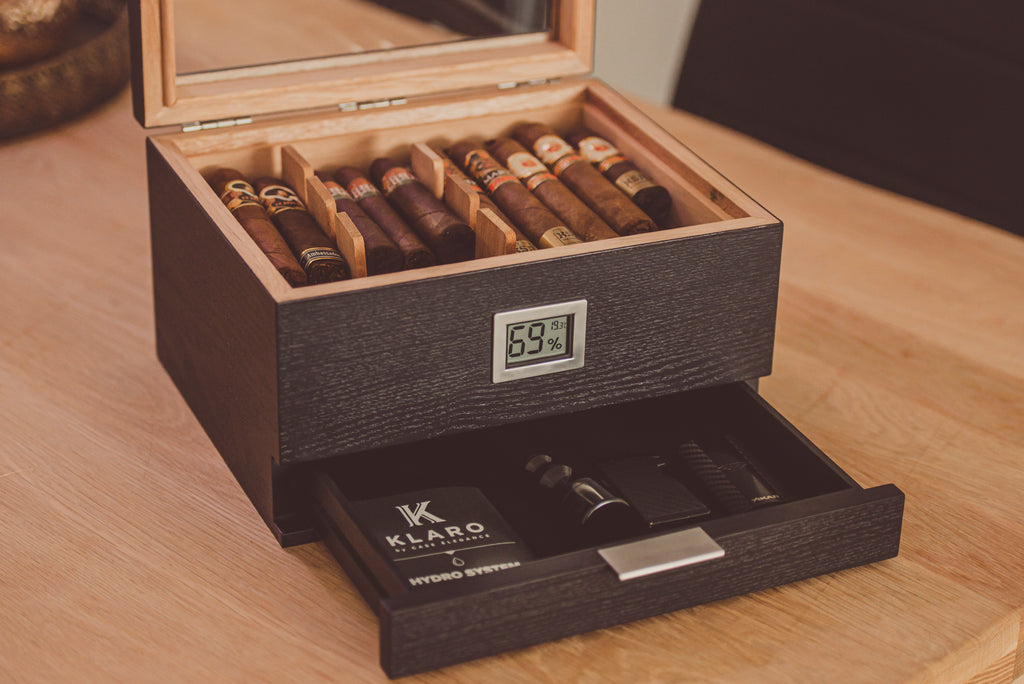
We’ve heard from a lot of different cigar enthusiasts who each have different strategies for organizing their humidor–and many of their tactics have legitimacy. Here is a breakdown of some common themes we saw around cigar organization.
By Brand?
With various tobaccos and wrappers shared across brands, we like to think cigars are a bit more homogenized and there’s less of a risk of tobacco oils from a different brand completely obscuring the flavor of another. Organizing by brand is less about keeping tobacco pure and more about keeping track of what you’ve bought, the brand’s different options, and what you’d like to try again in the future.
Sure, organize by brand. You might even have some fun and organize based on each brands relationship to another. After all, there’s a fair amount of drama and interplay across major cigar brands.
To learn more about cigar brands and the ever-evolving legacy and boutique brands across the industry, check out these cigar brand resources to learn more about the history and background of each brand.
By Size?
We’ve heard of some cigar collectors who organize by size (and even shape). Storing by ring size, from largest to smallest, might be a helpful tactic so you can quickly peruse your collection based on the kind of smoking experience you want to have. But, overall, this method gets dicey: soon you have very different tobaccos and cigars stored next to one another, which increases the likelihood of unwanted oil and flavor sharing. And just so you have easy access to the size of cigar you want? Better to store by wrapper type or type of cigar so you can choose based on that interest.
By Strength?
Another common organization method is to separate your cigars by strength, keeping mild and medium cigars as distant as possible from some of your stronger cigars, like full-bodied maduros. We like this strategy: you reduce the amount of flavor-sharing across strengths, and it gives you a quick way to decide which cigar to go with. And like separating your hard booze from your light beer, you know what you’re getting into with each decision.
Parting Puffs
To boil it all down to a couple suggestions: create a system that makes sense to you and is easy enough to follow. If that involves a detailed spreadsheet, so be it. If that means simply putting your new cigars towards the bottom of the humidor? Great. Two humidors often give you some added wiggle room, but you should still have an organizational system and not just an additional humidor to throw cigars in.
To learn more about humidor maintenance and cigar storage, check out our comprehensive humidor guide. Here we talk a lot about how to choose the right humidor, owning and maintaining a humidor, the history of humidors, humidor accessories, and more. Check it out, and be sure to subscribe to our newsletter to receive the latest updates on Klaro humidors and even more helpful Case Elegance content.






